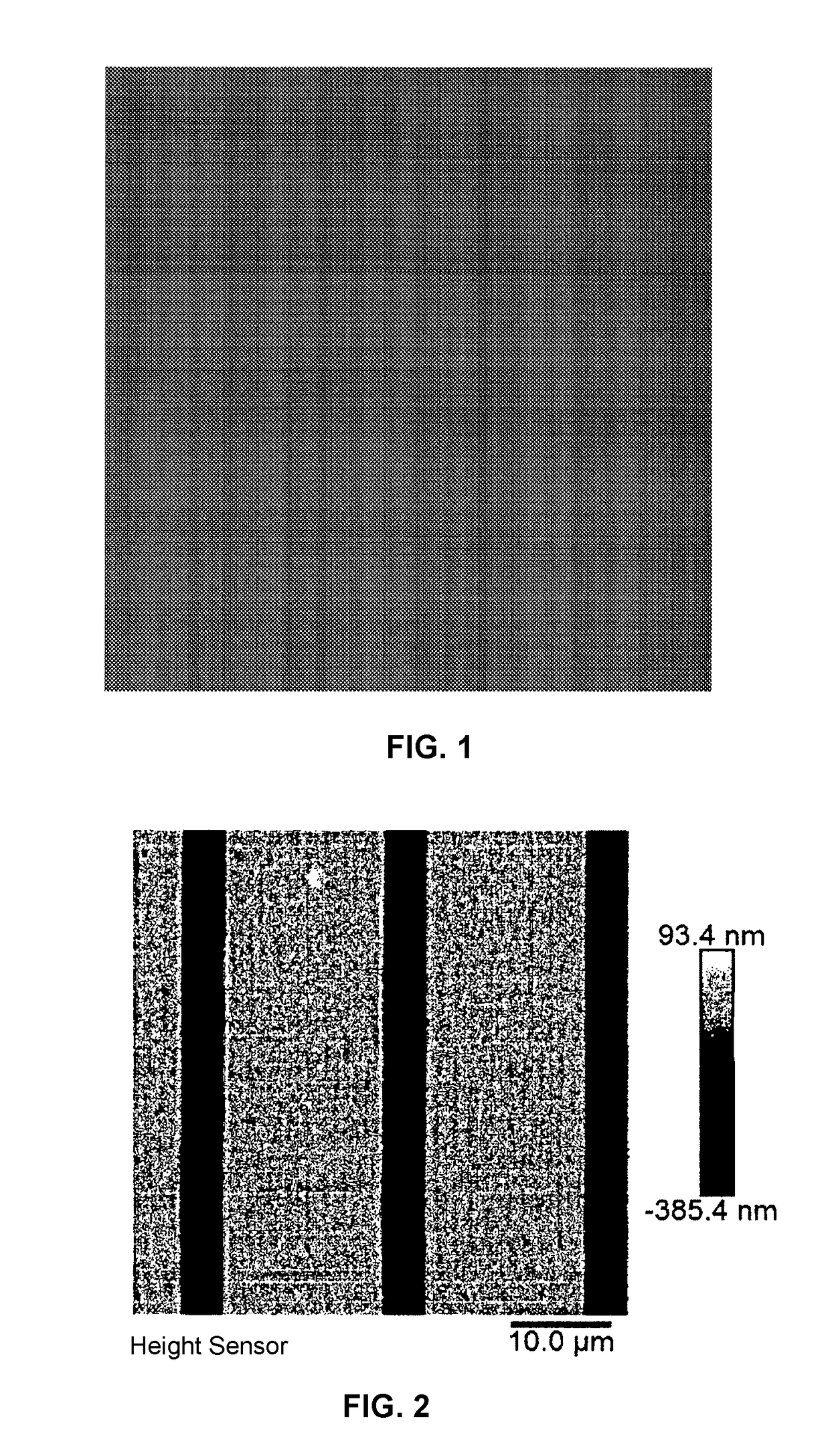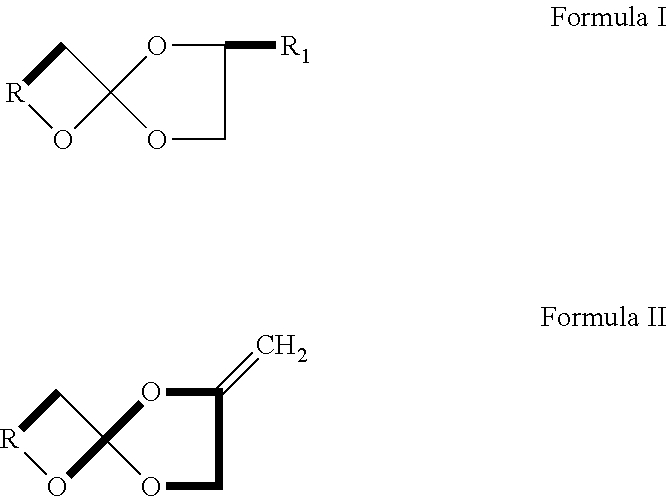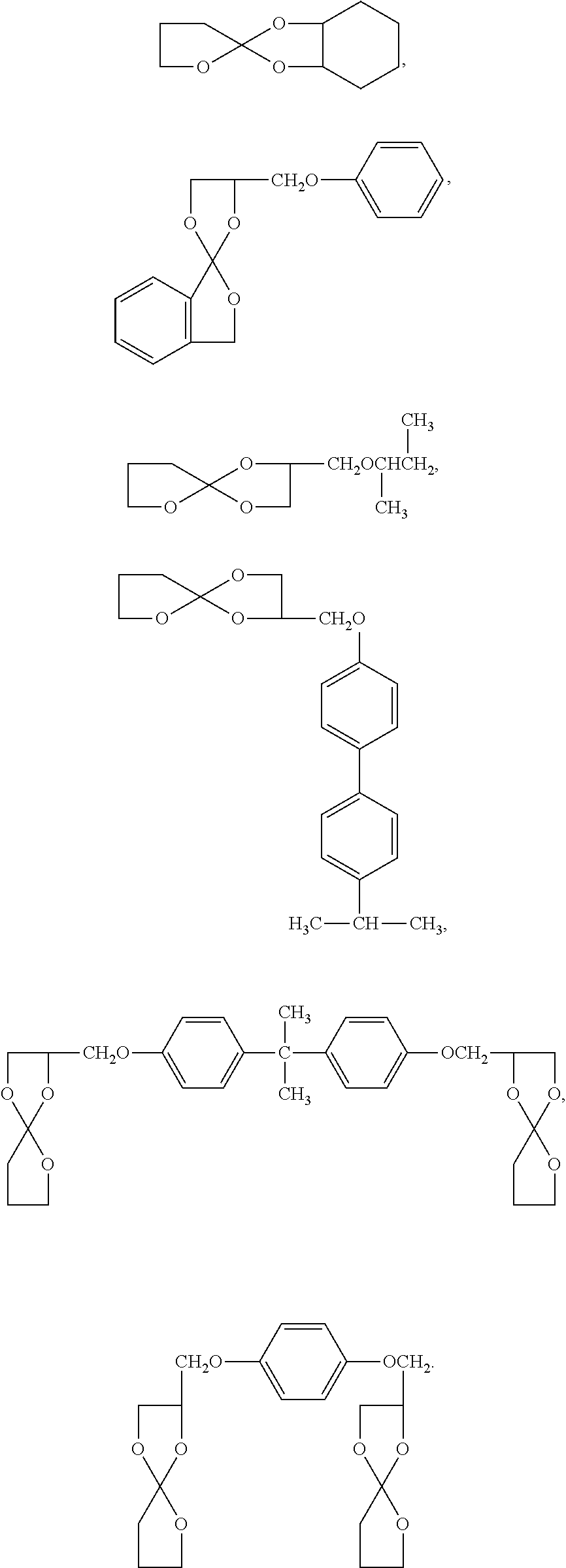Expansion polymerization imprinting glue for nano-printing
a polymerization and nano-printing technology, applied in the field of nano-printing technology, can solve the problems of low process throughput, increased cost and processing difficulties, and reduced pattern fidelity, and achieves low curing shrinkage, low surface energy, and easy demolding
- Summary
- Abstract
- Description
- Claims
- Application Information
AI Technical Summary
Benefits of technology
Problems solved by technology
Method used
Image
Examples
example 1
mprint Resist System of Spiro Orthocarbonate and Epoxy Resin
[0039]Raw materials required for the preparation of the expansion polymerization imprint resist for nano-imprinting in this example comprise an oligomer, an expansion monomer and a photoinitiator, wherein the oligomer is an epoxy resin monomer, the expansion monomer is a spiro orthocarbonate compound, specifically is 2,4,8,10-tetramethyl-1,5,7,11-tetraoxaspiro[5,5]undecane having a structure as shown in formula VI, and the photoinitiator is triaryliodonium salt.
[0040]The preparation process of the expansion polymerization imprint resist for nano-imprinting of the present example is as following: the epoxy resin oligomer, the expansion monomer 2,4,8,10-tetramethyl-1,5,7,11-tetraoxaspiro[5,5]undecane and the triaryliodonium salt photoinitiator were uniformly mixed when avoiding light. The weight percentage of the oligomer, expansion monomer and photoinitiator were 90 wt %, 9 wt % and 1 wt %, respectively. In the present examp...
example 2
mprint Resist System of Spiro Orthocarbonate and Silicon-Containing Epoxy Resin
[0042]Raw materials required for the preparation of the expansion polymerization imprint resist for nano-imprinting in this example comprise an oligomer, an expansion monomer, a photoinitiator and a diluent, wherein the oligomer is a silicon-containing epoxy resin monomer, the expansion monomer is a spiro orthocarbonate compound, specifically is 1,5,7,11-tetraoxaspiro[5,5]undecane having a structure as shown in formula VII, the photoinitiator is triaryliodonium salt, and the diluent is PGMEA.
[0043]The preparation process of the expansion polymerization imprint resist for nano-imprinting of the present example is as following: the silicon-containing epoxy resin oligomer, the expansion monomer 1,5,7,11-tetraoxaspiro[5,5]undecane, the photoinitiator and the diluent PGMEA were uniformly mixed when avoiding light. The weight percentage of the oligomer, expansion monomer, photoinitiator and diluent were 20 wt %...
example 3
mprint Resist System of Spiro Orthocarbonate and Silicon-Containing Epoxy Resin
[0046]Raw materials required for the preparation of the expansion polymerization imprint resist for nano-imprinting in this example comprise an oligomer, an expansion monomer, a photoinitiator and a diluent, wherein the oligomer is a silicon-containing epoxy resin monomer, the expansion monomer is a spiro orthocarbonate compound, specifically is 1,5,7,11-tetraoxaspiro[5,5]undecane having a structure as shown in formula VII, the photoinitiator is triaryliodonium salt, and the diluent is epoxy cationic active diluent.
[0047]The preparation process of the expansion polymerization imprint resist for nano-imprinting of the present example is as following: the silicon-containing epoxy resin oligomer, the expansion monomer 1,5,7,11-tetraoxaspiro[5,5]undecane, the photoinitiator and the diluent were uniformly mixed when avoiding light. The weight percentage of the oligomer, expansion monomer, photoinitiator and di...
PUM
| Property | Measurement | Unit |
|---|---|---|
| viscosity | aaaaa | aaaaa |
| thickness | aaaaa | aaaaa |
| shrinkage | aaaaa | aaaaa |
Abstract
Description
Claims
Application Information
 Login to View More
Login to View More - R&D
- Intellectual Property
- Life Sciences
- Materials
- Tech Scout
- Unparalleled Data Quality
- Higher Quality Content
- 60% Fewer Hallucinations
Browse by: Latest US Patents, China's latest patents, Technical Efficacy Thesaurus, Application Domain, Technology Topic, Popular Technical Reports.
© 2025 PatSnap. All rights reserved.Legal|Privacy policy|Modern Slavery Act Transparency Statement|Sitemap|About US| Contact US: help@patsnap.com



